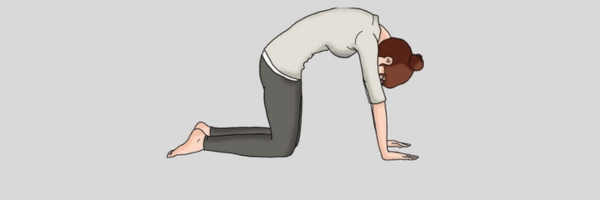While degenerative disc disease may not be commonly understood, it is certainly common in the population. People may start to develop the disease in their 20s, says Claire Bingham, PT, DPT, ATC, LAT, a physical therapist. This is typically due to the natural loss of water content in the body as we age.

Understanding Degenerative Disc Disease
Degenerative disc disease is a condition that affects the spine and can be diagnosed with X-rays, MRI, or a CT scan. Each spinal disc contains a gel-like center that serves as a shock absorber. With aging, this gel can diminish, resulting in degenerative disc disease. Some practitioners explain this like a jelly donut.
Imagine their spine is like a stack of jelly donuts. Each donut represents a spinal disc. Inside each donut, there's a gooey jelly center, which is like the gel-like center in a spinal disc. This jelly helps the donut stay squishy and absorb pressure, just like the gel in their spinal discs helps absorb shocks and keep their spine flexible.

As they age, the jelly inside the donuts can start to dry up or shrink. This is similar to what happens with spinal discs—they lose some of their gel, making them less effective at cushioning and leading to what's known as degenerative disc disease.
Weakening of Discs, Damage to Vertebrae, and Compression of Nerves
This condition can lead to weakening of the discs and damage to the vertebrae. Additionally, it may cause the formation of bone spurs that exert pressure on nerves, resulting in pain and reduced mobility.
By the time folks reach age 50, 80% have signs of degenerative disc disease, though not all are in pain. Claire says that while the disease itself may not cause pain, it will cause inflammation to stick around when there is another pain-causing ailment present.
Strategies for Potential Prevention
Maintaining a healthy weight, exercising regularly, practicing good posture, using proper lifting techniques, staying hydrated, managing stress, and seeking prompt medical attention for symptoms are all essential in preventing or slowing the progression of degenerative disc disease.

While the disease cannot be cured, physical therapists like Claire can assist in finding patients movement positions to decrease pain and exercises to help put their body in a position where the condition is not exacerbated. Once the inflammation subsides, folks typically go back to moving the way they once were.
Effective Exercises to Reduce Pain and Inflammation
Lumbar decompression: Lie on your back with your feet on a chair

Back extension: Lie on your stomach with your torso raised and arms extended

Cat stretch: Start on your hands and knees, then gently arch your back by lowering your neck toward your chest

Sideline twist: Reach behind you with your top hand while keeping your hips and knees flat

If you often have back or neck pain, with sharp pain bursts, tingling, and stiffness that improves when you move, visit an OrthoCarolina clinic near you to set up an appointment!
This information is provided as an educational service and is not intended to serve as medical advice. If you are seeking specific orthopedic advice or assistance, please consult with your OrthoCarolina physician or locate one in your area through OrthoCarolina’s website at www.OrthoCarolina.com.
Back




June 17, 2024